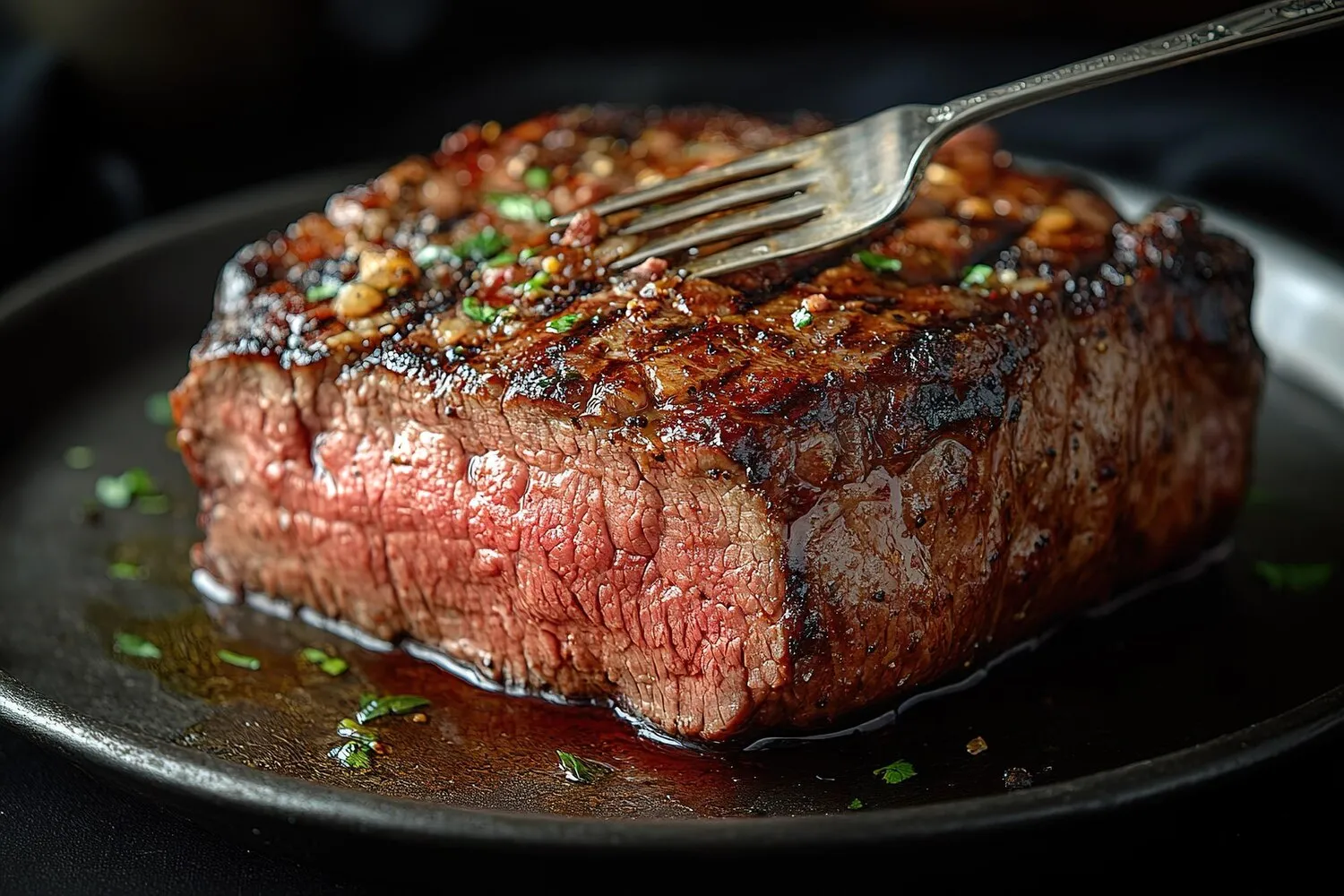
Steak
Given the name of the restaurant, steaks are a primary offering. Reviews suggest that steaks are a popular choice.
Nutrition Facts
* The % Daily Value (DV) tells you how much a nutrient in a serving of food contributes to a daily diet. 2,000 calories a day is used for general nutrition advice.
The concept of cooking meat over an open fire dates back to prehistoric times. However, the modern steak, as a specific cut and culinary preparation, gained prominence in 17th-century England. The rise of chophouses and steakhouses solidified steak's place in culinary history, evolving from simple grilled meat to sophisticated dishes with diverse cuts and preparations.
Steak represents indulgence, celebration, and a sense of occasion. It's often associated with special events, business dinners, and fine dining experiences.
Celebratory Meal
Steak is frequently chosen as the centerpiece of celebratory meals, symbolizing success and prosperity. It's a popular choice for birthdays, anniversaries, and other special occasions.
Masculinity and Strength
Historically, steak has been associated with masculinity and physical strength, often depicted in media as a symbol of power and virility.
Social Gathering
Steak dinners are often a social affair, bringing people together to share a high-quality meal and enjoy each other's company. Steakhouses provide a formal and convivial setting for these gatherings.
Steak offers a rich and savory umami flavor profile, enhanced by the Maillard reaction during cooking. The specific flavors are largely determined by the cut of meat, grade, and cooking method.
The primary flavor is the rich, beefy taste derived from the muscle fibers and fat content of the steak. Higher grades of beef, like Prime or Wagyu, boast more intramuscular fat (marbling), resulting in a more tender and flavorful steak. Cooking methods like grilling, pan-searing, or broiling create a caramelized crust with smoky notes. Seasoning, typically with salt and pepper, enhances the natural flavors of the beef. Additional flavors can be introduced through marinades, rubs, or sauces, such as herb-infused butter, garlic, or peppercorn sauce.
Choosing the Right Cut
Selecting the appropriate cut of steak is crucial. Consider factors like tenderness, flavor, and fat content. Popular cuts include Ribeye (rich and flavorful), Filet Mignon (tender), New York Strip (firm texture), and Sirloin (leaner option).
Proper Seasoning
Season generously with salt and pepper before cooking. Salt not only enhances the flavor but also helps to draw out moisture and create a better sear.
Achieving the Perfect Sear
Ensure the pan or grill is sufficiently hot before adding the steak to achieve a good sear. A high temperature creates a flavorful crust through the Maillard reaction.
Resting the Steak
Allow the steak to rest for at least 5-10 minutes after cooking. This allows the juices to redistribute, resulting in a more tender and flavorful steak.
Internal Temperature
Use a meat thermometer to ensure the steak reaches the desired internal temperature for your preferred level of doneness: Rare (125-130°F), Medium-Rare (130-135°F), Medium (135-145°F), Medium-Well (145-155°F), Well-Done (155°F+).
Explore additional Grilled dishes and restaurants
Explore GrilledDiscover top dining spots and culinary experiences in Willemstad.
Explore WillemstadLearn more about the food culture, restaurant scene, and culinary heritage of Curacao.
Explore Curacao
